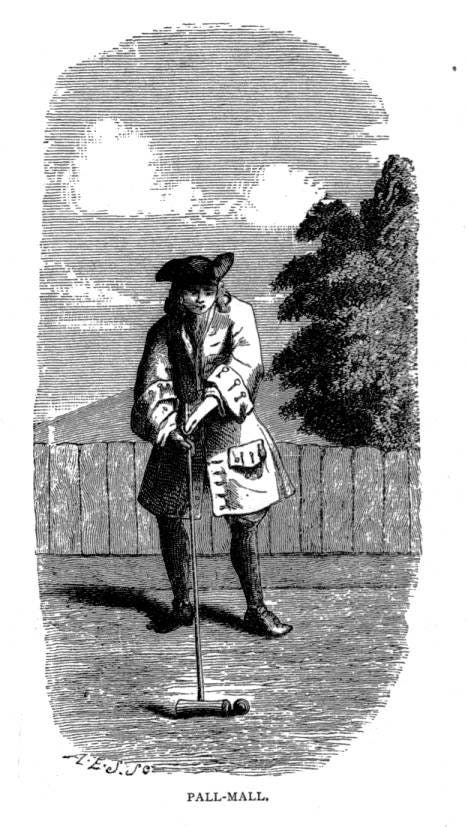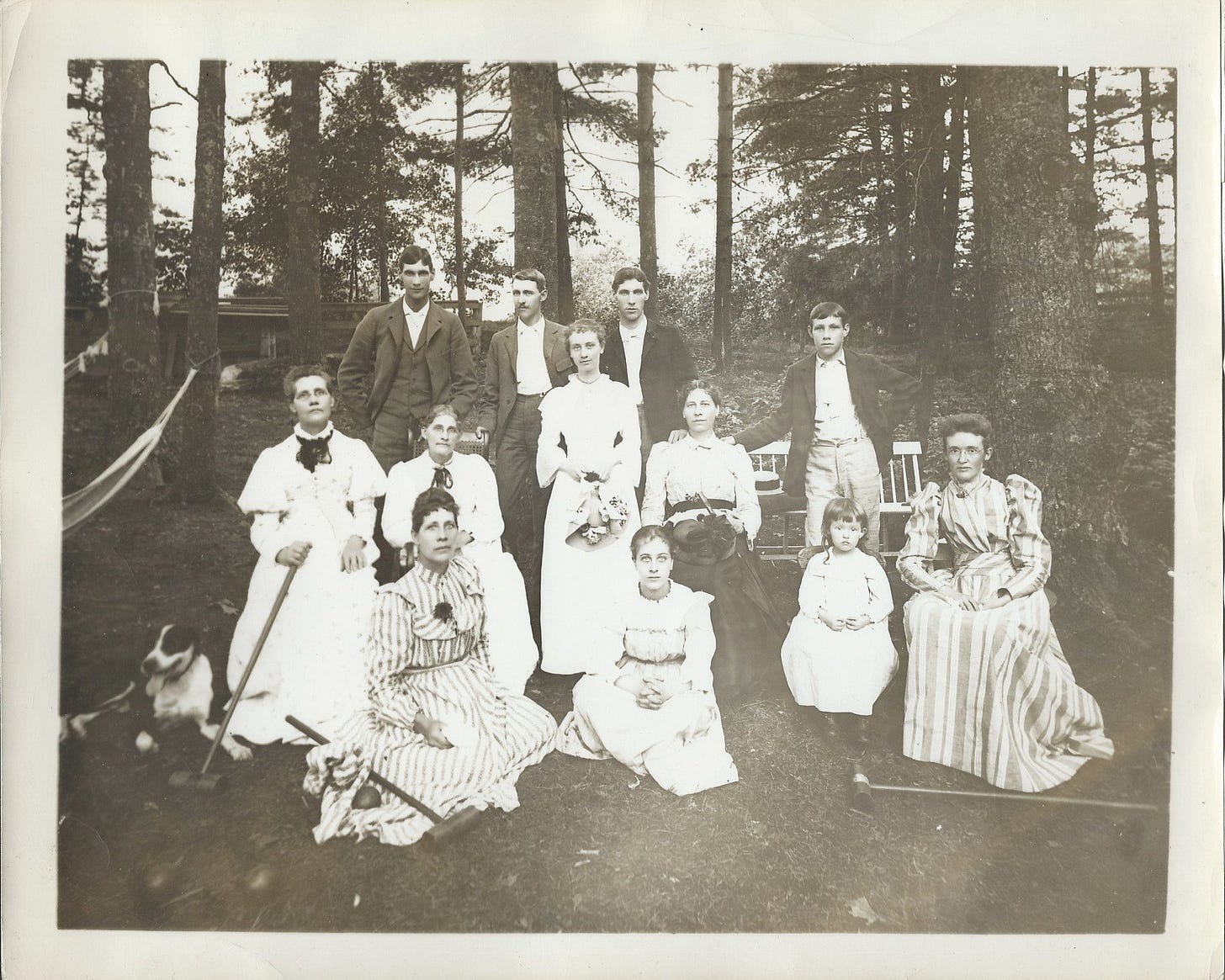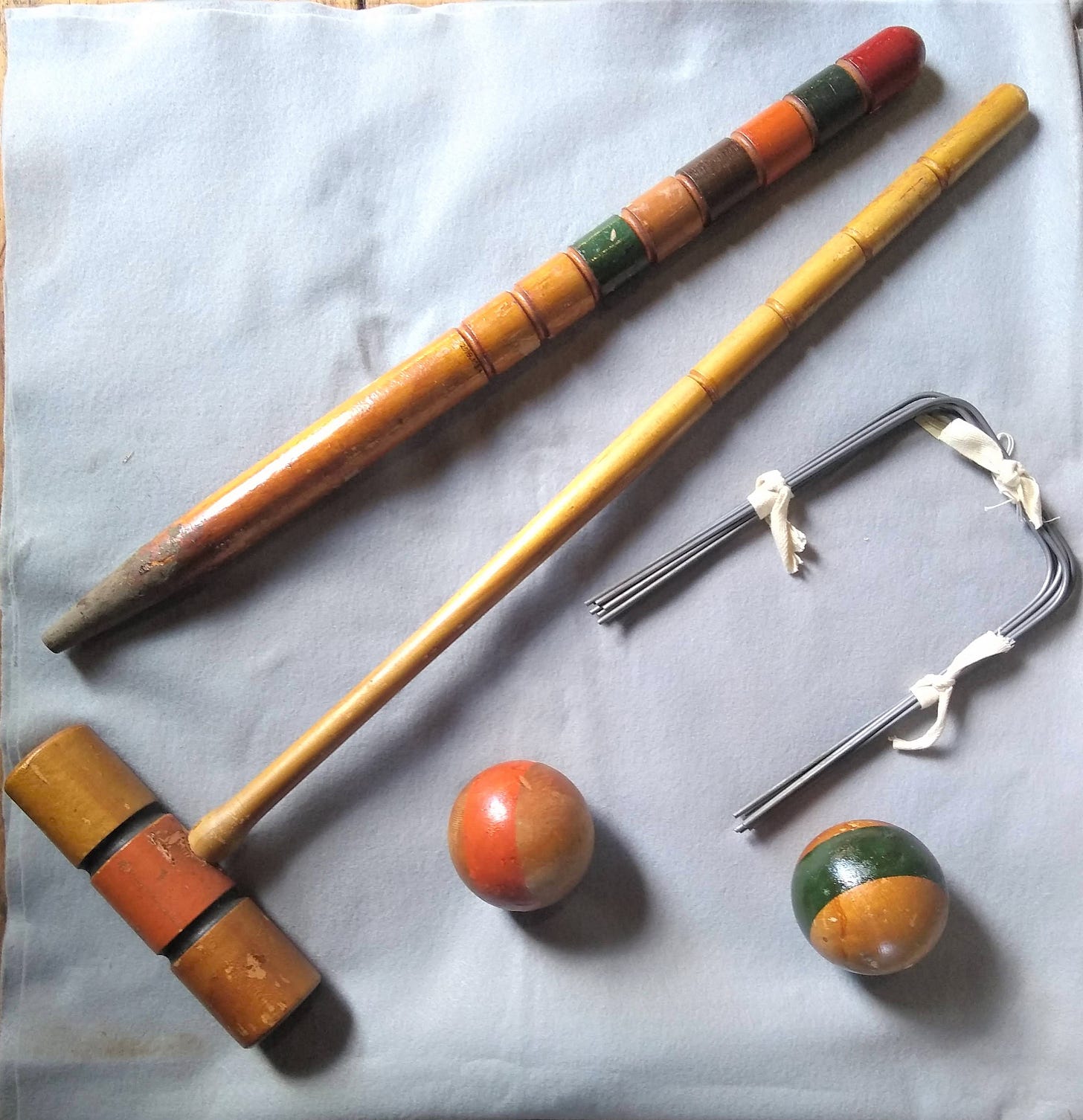What's It Wednesday Just another day in the Park
Maybe it’s the summery weather or all the coverage of the Queen’s Platinum 70th Jubilee, but my mind has taken a turn toward lawn parties and croquet.
Does anyone play Croquet anymore?
How on earth did it become a game?
Croquet, sometimes called lawn croquet, is played outdoors on a grassy lawn or on a clay court. Players use wooden mallets to hit balls through a series of metal hoops set on the lawn. Winning consists of getting through the hoops (wickets) in the correct order and hitting a wooden peg at the end of the series to win. Of course, often there is fierce competition to the be the winner; players are permitted to whack another player’s ball out of the way or off the court in order to continue through the series of wickets.
The origins of croquet aren’t clear.
According to the Encyclopedia Britannica, Croquet was born in France in the 13th century as “Paille Maille” or pall-mall. Pall-mall was played with two iron arches. Players were limited in the number of times their mallet could hit the ball to get it through the two arches to touch the wooden peg that was the goal. Initially, it was played only by the wealthy and privileged. By the 1800s, the game had migrated to Britain and morphed into a more complicated game involving a series of six or more hoops laid out in a pattern, which had to be run in a specified order.
Croquet might have been derived from Pall-Mall. Another theory is that it originated from Crookey, a game played in Ireland in the 1850s. Crookey involved multiple balls on the court at a time, much like croquet, but there is no written record of the rules. It seemed to be a casual game with rules decided on by the players. The first formal rules of Croquet, were written up in 1857 by John Jaques of London, after he witnessed the game being played in Ireland. But even that is disputed. Isaac Spratt, another Londoner, claimed to be the first to write up the rules after witnessing the game played in Ireland in 1856. John Jaques went on to publish Official Rules of Croquet in 1857, 1860, and 1864. He also manufactured and sold complete croquet sets, helping to spread the popularity of the game.
The All England Croquet Club was formed at Wimbledon, London in 1868. Formal Croquet competitions were played on the clay court. Many other clubs with their own courts sprang up throughout England. By 1870, over 65,000 copies of the Croquet Laws and Regulations had been printed. By that time, Croquet had spread to other countries in the British kingdom including Canada, New Zealand, South Africa, and Australia, as well as the United States.
The popularity included both men and women. Croquet parties and teas were especially popular with young women. It offered them a chance to socialize without the constraints of chaperones.
As quickly as the popularity of croquet had spread, it began to wane. Lawn Tennis began to take over. The All England Croquet and Lawn Tennis Club of Wimbledon dropped the word Croquet from its name in 1880. By the late 1880s, interest in Britain and Europe had turned almost exclusively to lawn tennis, played on the former croquet lawns and courts.

In the U.S., croquet continued to be popular though. In 1882, Croquet was formally organized in the U.S. by the National Croquet Association, and tournament games began. Seven years later, at the Association meeting in New York City, they voted to drop the C and T from the word Croquet, making the name Roque. Another version of croquet was born, played solely on a clay surface court with solid boundary walls.
Lawn Croquet is the informal “backyard” version that has survived through the years in the U.S. It’s the version more familiar to families playing in backyards or parks.
The interest in croquet declined in the early part of the 1900s, but saw a rise in popularity again in the 1930s and 1940s. After World War II, toy manufacturing companies started making a smaller standard croquet set with 6 balls and shorter mallets sized for children.
In the U.S., Lawn Croquet sets consist of 9 wickets, two wooden pegs, 6 wooden mallets, and 6 hardwood balls. Players select their favorite color ball and matching mallet. The balls are either painted solid colors or with a colored band. The standard colors are blue, red, green, black, yellow, brown. Which also represents the order of play. Blue gets to go first. The wickets are set in a double diamond pattern on a 40’ by 75’ lawn space. Of course, the size can be adjusted for smaller spaces. Though there are standardized rules for the game, many families make their own and allow some leeway for younger children.
According to the United States Croquet Association, there are more than 10,000 men and women playing croquet through clubs and tournaments in the US and Canada. That doesn’t even include backyard family games!
The rules are easy and any age can play. Maybe it’s time to play croquet!
Thanks for reading!
Do you remember playing croquet?
Please share your comments, pictures, or memories. I’d love to hear your stories. You can comment below or email me at mhelmers@andoverhistoryandculture.org
Click here to open a free Substack account, so you can like, share, and comment.
Marilyn
History Buzz is a reader-supported publication. To receive new posts and support our work, consider becoming a free or paid subscriber.
Resources
Andover Center for History and Culture Collection
Encyclopedia Britannica Croquet
Backyard Croquet History When and Where










Thanks for sharing, Donna. What a great memory! It reminded me of my family's games growing up. We were a family of 6 so the croquet set had just enough balls and mallets for us all to play including my parents. So much laughing during those games.
Croquet was my absolute favorite Summer Game as a young person. My father bought us a gorgeous croquet set with beautifully lacquered poles and mallets. The mallets were nicely turned on a lathe, but the best part of the game were the colorful balls. Both ends of the mallets had lovely rubber discs so that when you hit your the ball, the sound was nice thump. When your ball ended up colliding with another, the result was an amazing, “Crack” sound. Everyone loved to play croquet at our house. It was a favorite activity in Summers afternoon after a swim in the pool, we would all have a friendly game of Croquet! On the lawn. So much fun!